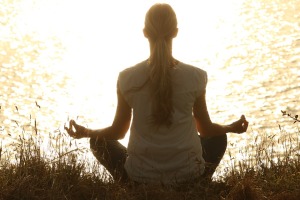It’s only 1 a.m., and you’re already dreading the dawn.
If you’re like a surprising one in every three people in the United States, you have some form of mild insomnia. Although most of us have bad nights here and there, insomnia is a problem that recurs for some period of time. The effects of sleeplessness can be debilitating, ranging from concentration problems and irritability all the way to heart problems and depression. It’s worth getting a handle on.
Although serious cases of insomnia may need the help of sleep specialists, simple habit changes often cure more minor cases. Here are five things you can do to relax and sleep easy. Put to rest those sleepless nights and get back to clear-headed health!
- Guided Meditation
This form of meditation relies on the guidance of another person, usually in the form of a recorded voice. These work because your brain can’t tell the difference between a real event and an imagined one. As you travel on a guided meditation journey, your brain believes it to be real, and forms new neural pathways that your subconscious mind then stores. Guided meditation helps change bad sleeping habits into good ones by forming positive experiences in the mind, which contribute to relaxation, de-stressing, and better sleep hygiene.
because your brain can’t tell the difference between a real event and an imagined one. As you travel on a guided meditation journey, your brain believes it to be real, and forms new neural pathways that your subconscious mind then stores. Guided meditation helps change bad sleeping habits into good ones by forming positive experiences in the mind, which contribute to relaxation, de-stressing, and better sleep hygiene.
Free guided meditation exercises can be found online in places like YouTube and meditation websites.
- Breathing Exercises
Using breathing techniques can help eliminate physical and mental stress, tension, and anxiety. They also help to lower the blood pressure. Deep breathing heightens the body’s oxygen levels, which helps your body to function more easily. It also mimics the deep breathing patterns of restful sleep.
One of the more popular and effective ones is called 4-7-8 breathing. To use it, simply inhale for four seconds; hold it for seven seconds; and exhale slowly for 8 seconds. Repeat this as needed.
Another popular method is alternate nostril breathing. Gently place your thumb and ring finger on either side of your nostrils. Breathe deeply in and out, and then close off your left nostril and take a big breath through your right nostril. Hold the breath for four counts, and release the right nostril and exhale. Repeat on alternate sides.
- Progressive Relaxation
This simple technique works by harnessing the power of the mind-body connection to release tension. When in bed at night, focus on a specific part of your body, tense it up and hold for 5 seconds, and then release it. Start with your toes and work, area by area, progressively higher up your body until you reach the top of your head—or drift off to sleep.
- Counting Backward
Yes, good ol’ sheep counting does work. Starting at 100, take your time to count backward to 0. Pace yourself at about one number per second. The hitch is, if you forget which number you’re on or accidentally repeat, you have to start over at 100. Stay calm and relaxed, though; it’s ok to lose count! This method works because it’s monotonous and mildly hypnotic, and it takes your focus off your attempts to sleep.
- Insomnia Massage Therapy
 The Mayo Clinic and the National Institutes of Health both cite studies finding that massage is often helpful for relieving insomnia. These studies have found that when people receive regular massage therapy, they tend to spend more time in deep sleep. Massage affects the body’s production of serotonin, which is necessary for the production of melatonin, and it also promotes deep relaxation.
The Mayo Clinic and the National Institutes of Health both cite studies finding that massage is often helpful for relieving insomnia. These studies have found that when people receive regular massage therapy, they tend to spend more time in deep sleep. Massage affects the body’s production of serotonin, which is necessary for the production of melatonin, and it also promotes deep relaxation.
Try one or all of these methods before resorting to measures such as medication. It’s often necessary to take a multidisciplinary approach to sleep health before finding the combination that works right for you.
Massage therapy can be very helpful for relaxation and help sleeping. To schedule your appointment, contact Strongsville Massage today either online or at 216-339-1089!
